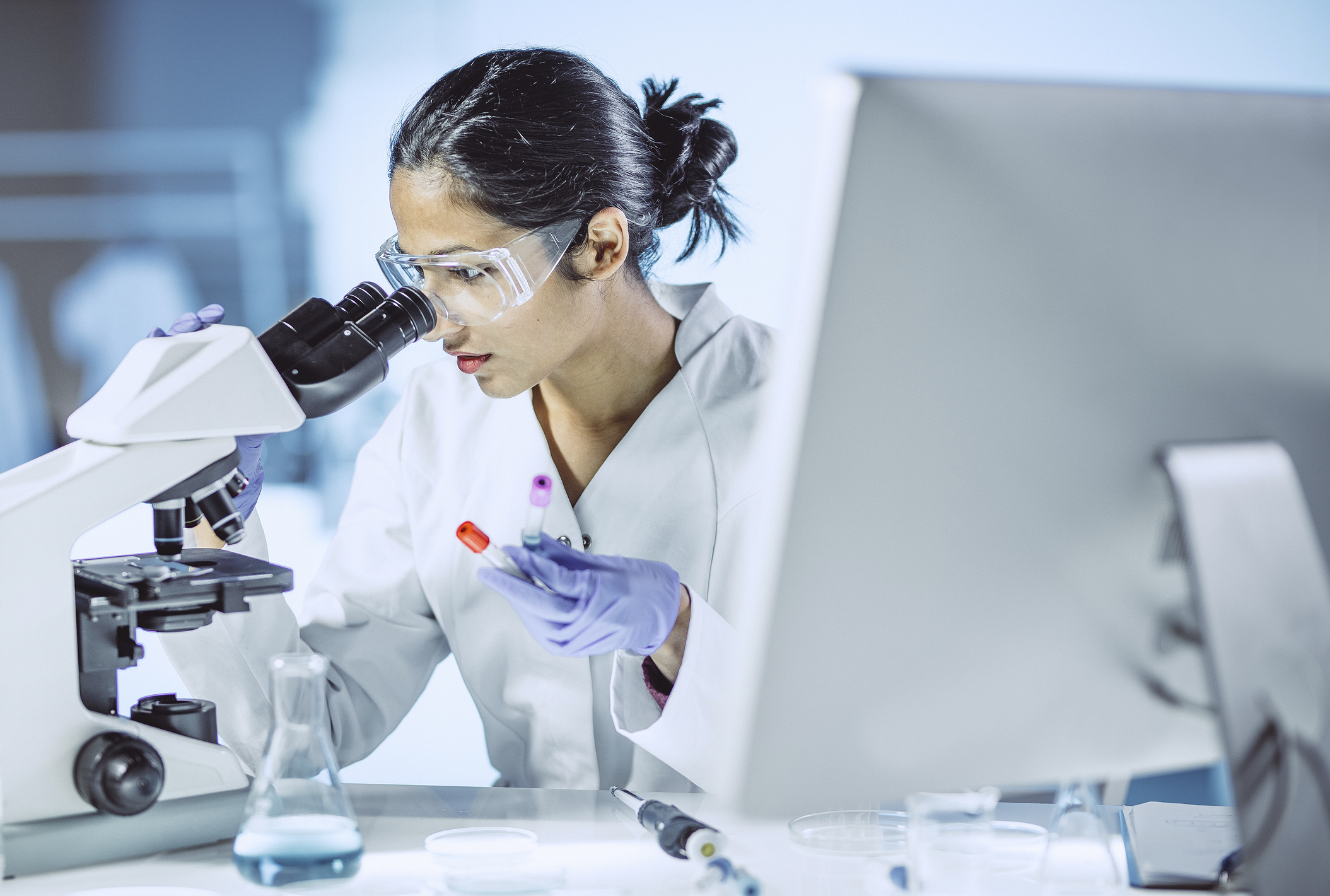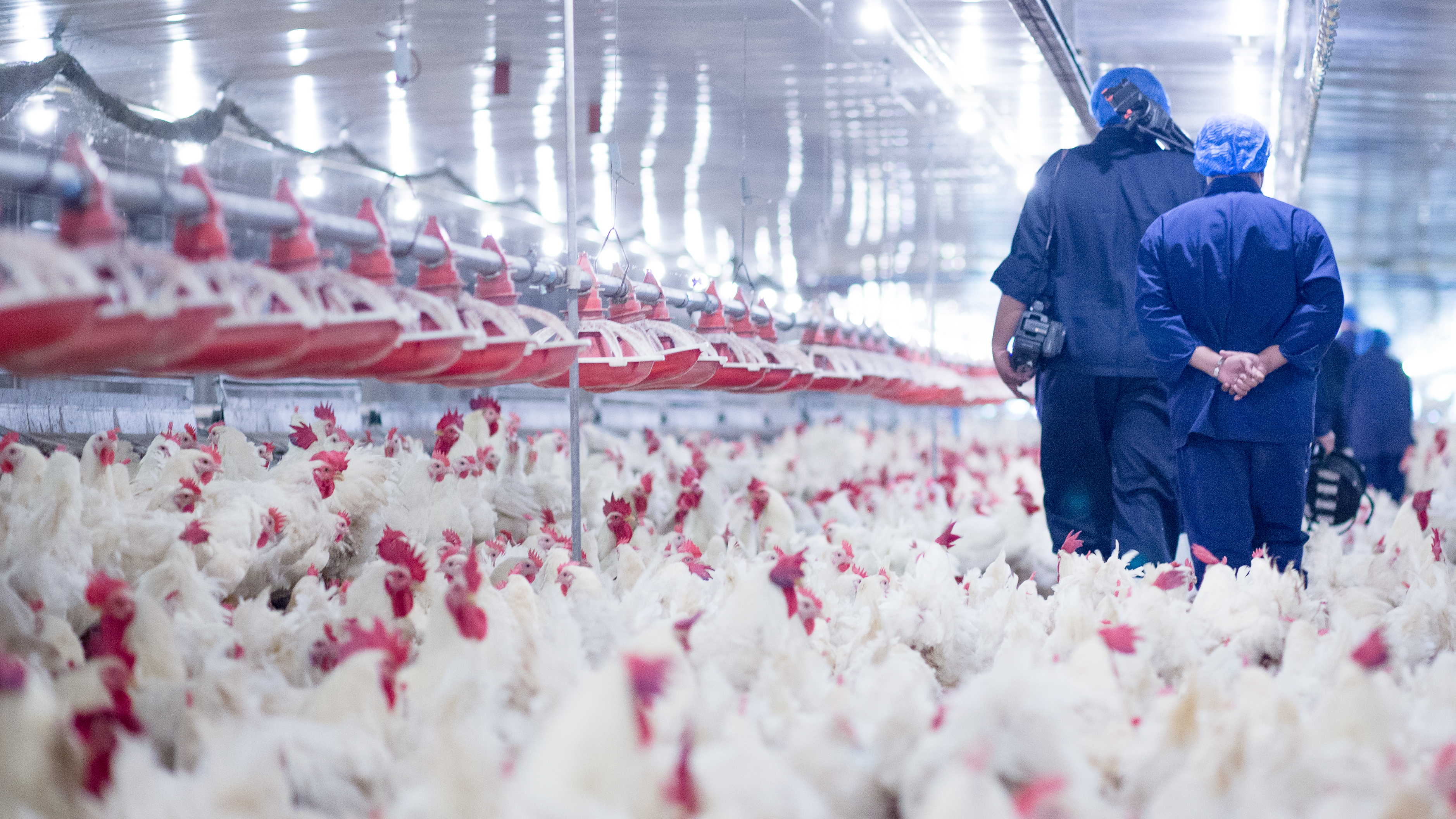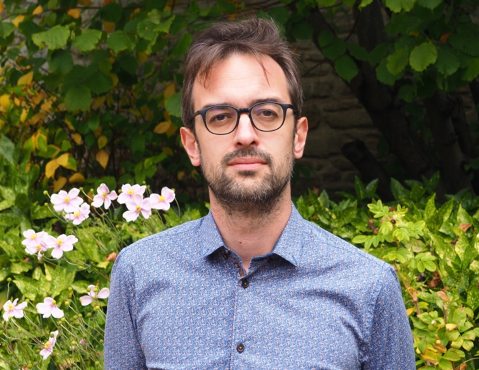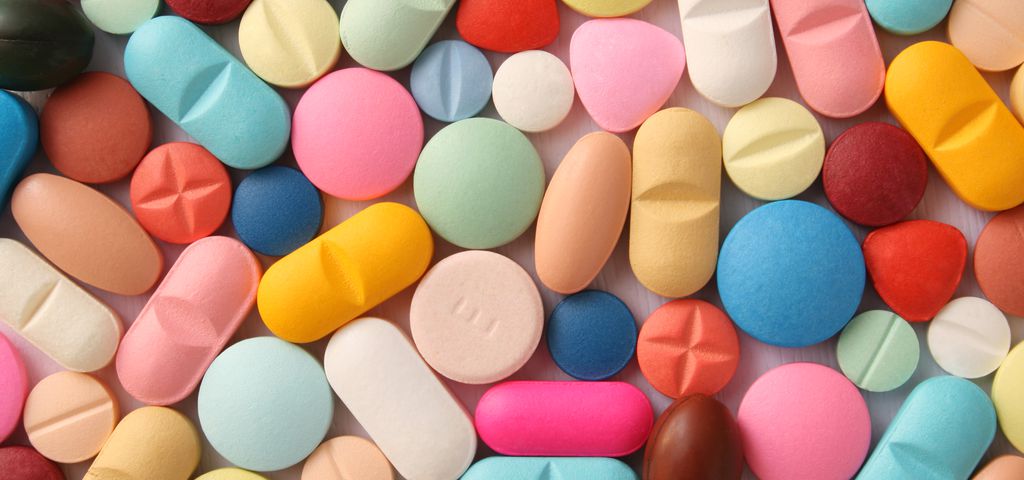Ten million deaths a year by 2050, says the emblematic O'Neill report published in 2016. To some extent the problem of antimicrobial resistance looks like it might be even more frightening than the crisis we have been experiencing over recent months. Whether they come from the medical, agricultural, industrial, political or scientific world, the vast majority of stakeholders now agree on the extent to which antimicrobial resistance is creating dramatic risks to our societies and that there is now an urgent need for large-scale changes in the way that we produce and use antibiotics. Not a day goes by without a newspaper article discussing the health or environmental consequences of the spread of resistant bacteria; not a week goes by without new scientific publications confirming the seriousness and extent of the problem; not a month without a report, plan of action or statement by major political or business leaders highlighting the awareness and the efforts needed to stem the predicted disaster. Because this is what it is about: antimicrobial resistance is a threat, a tragedy, a nightmare ... in short, it would appear that the only way we are able to imagine a world without antibiotics is through a dystopian narrative.
Indeed, nowadays the problem of antimicrobial resistance is constantly understood and treated through the semantics and repertoires of "crisis", with its classical framing in terms of urgency and dread. Yet it could be viewed in a slightly different manner that would allow us to put this ambient dramaturgy into perspective, or at least to consider it on another level. Needless to say, it is not a question of denying the health and environmental consequences of the problem (the risks linked to the spread of resistant bacteria and the loss of antibiotic effectiveness are clearly established), but it is nevertheless possible to take a critical look at these narratives which relentlessly call into question the framing of the crisis and the gloomy predictions that accompany it.
 The "antibiotic-free" worlds imagined by all sorts of prophets of doom are never neutral projections. While apocalyptic fictions undeniably drive the mobilization against the problem of antimicrobial resistance, they also mask some realities - certainly tangible, even if less easily expressed - about the direction our collective actions are taking to "save" antibiotics. The tragedy of a world without antibiotics is not necessarily the one we think it to be. But if we wish to choose our future, we must face the real issues of antimicrobial resistance and turn the nightmare into a promise.
The "antibiotic-free" worlds imagined by all sorts of prophets of doom are never neutral projections. While apocalyptic fictions undeniably drive the mobilization against the problem of antimicrobial resistance, they also mask some realities - certainly tangible, even if less easily expressed - about the direction our collective actions are taking to "save" antibiotics. The tragedy of a world without antibiotics is not necessarily the one we think it to be. But if we wish to choose our future, we must face the real issues of antimicrobial resistance and turn the nightmare into a promise.
Crisis, opportunity and resilience
Numerous examples (climate, environment, health, food, etc.) teach us that despite the dystopian narratives and fantasies that nourish the crisis framing, actors are capable of deploying other modes of action and anticipation. The problem of antimicrobial resistance is no exception to the rule. One way of taking account of this is undoubtedly to take a detour through history. Even if we sometimes tend to forget or choose to ignore it, resistant bacteria and the threat they pose to our antibiotic arsenal are nothing new. It is possible to identify several historical sequences during which antimicrobial resistance was viewed as a crisis, both health-related and political, after the myth of the permanent renewal of the antibiotic "pipeline" began to drastically erode in the early 1960s.
The crisis rhetoric was already highly visible in the 1970s, when the first restrictions on antibiotics used as growth promoters in livestock farming[1], and the first attempts to regulate doctors' prescriptions, were introduced … albeit with limited success. The nightmare narrative of a world without antibiotics became even more widespread in the 1990s and 2000s, when growth promoters were this time definitively banned in Europe and when huge prevention campaigns on the rational use of antibiotics increased in number (we all remember, in France, the famous slogan: "antibiotics are not automatic"[2]). Finally, the last few years have resonated for us as the climax of the threat and of the mobilization against the problem’s and its causes and effects: we are told that we must buy “antibiotic-free” food products, that we must support the pharmaceutical industry in its search for new molecules to develop and, more generally, that we must drastically reduce the demand for antibiotics in the four corners of the world ... including, paradoxically, in places where access to medicines is a far more serious issue than their excessive use (in short, in the "Global South").
This (too) brief historical perspective is a reminder that all nightmares and disasters are narratives before they become reality ... which does not mean for one minute that the crisis is only imaginary and has no tangible existence (on the contrary, resistant bacteria are already killing people), but that the dystopian narratives that frame the problem of antimicrobial resistance serve strategies and logics of action that are not only crisis related (in particular prevention, precaution and preparation, to use the well-known repertoires of global health). In parallel with the urgency and dedication with which we are now mobilizing to save antibiotics, forms of opportunity and resilience can also be seen in the way that actors are grasping the issue and in the manner in which the political, economic and medical fields in charge of the problem are being recomposed.
Firstly, resistant bacteria and the declining efficacy of antibiotics constitute (or, more precisely, have been constructed as) an opportunity for a series of actors who are promoting a range of solutions (technical, regulatory, market-based, etc.) that are supposed to solve to the problem. Yet the framing of a problem and the construction of its solutions are closely linked processes. If antimicrobial resistance were perceived as a problem of access to medicines rather than one of excessive use, it is very likely that we would implement significantly different measures which would be better adapted to certain contexts. Secondly, the permanent rhetoric of change (in individual behaviour, healthcare infrastructures, agricultural models, etc.), which is fed by the catastrophist narrative of the problem, masks forms of resilience in social, economic and technical structures which, while decried, often adapt very well to the shortage of antibiotics, or even become stronger, favouring a status quo that is totally contradictory to these repeated calls for change.
Heroes and heralds of AMR
We can briefly review the various actors involved in the construction of the problem and its solutions in order to gain a clearer understanding of the dynamics that underlie - or which may even be favoured by - the crisis of antimicrobial resistance. The fact that the heralds who convey the alarmist message of a world without antibiotics are also the heroes designated to save our therapeutic arsenal, should encourage us to read between the lines of the dystopian narrative and ultimately incite us to turn the nightmare into a promise.

Firstly, healthcare professionals - doctors and veterinarians in particular - are obviously on the front line when it comes to managing infections linked to resistant bacteria and are directly affected by the decline in the therapeutic effectiveness of antibiotics, which are essential tools for the care that they provide to their patients (both humans and animals). However, they have also been able to take advantage of the antimicrobial resistance crisis. While they have sometimes been accused of being responsible for excessive drug prescription, doctors and veterinarians have reversed the stigma placed upon them, by becoming the true "guardians" of antibiotics. Their professional legitimacy has been reinforced by the idea that their expertise is the only one capable of preserving the precious power of these drugs, by only prescribing them in a "prudent", "rational" or "responsible" manner (to use the key words of "antimicrobial stewardship", i.e. this coordinated effort of the medical and veterinary professions to define the "proper" use of antibiotics). In a context where their professional autonomy has sometimes been under threat - in some countries nurses have been given the power to prescribe, so as to reduce doctors’ workloads, and in many places veterinarians face competition from livestock advisers, including on animal health issues - the strengthening of professional expertise and legitimacy offered by the cause of safeguarding antibiotics, under the classic and indisputable veneer of evidence-based medicine, appears to be an opportunity that is very hard to ignore. The medical and veterinary professions are thus the first to benefit from the antimicrobial resistance crisis in as much as it has enabled them to strengthen their control over the definition of the "legitimate" use of antibiotics ... although internal fault lines within these professional groups have also begun to emerge in respect of these issues.

Secondly, public authorities, in particular international organizations in charge of health (human and animal), food and agriculture, are also actors whose mobilization is essential. Health is (or should be) a common good and it is logical that public authorities should take the issue on board and implement a myriad of measures designed to preserve the effectiveness of antibiotics and limit the proliferation of resistant bacteria (action plans, monitoring systems, incentive schemes, etc.). In so doing, they are also fuelling the competition that exists between different institutions for leadership in global health governance, especially at a time when the "One Health"[3] dynamic is promoting a reorganisation of historical power relations between certain administrative sectors and certain international organisations. The problem of antimicrobial resistance then becomes a resource, and hence an opportunity, for actors who manage to establish themselves as the inescapable leaders of a consensual cause that has imposed itself (and to some extent thanks to them) as one of the priorities of the global health policy agenda. International health governance has in fact been the object of competition between several different organisations for decades, with each one striving to impose its historical repertoire of action on the issue of antimicrobial resistance (e. g. stronger monitoring vs. development aid vs. standardisation of international trade). At a more regional level, countries are also seeking to promote measures in line with their regulatory "style" and their risk management model (e.g. regulatory framework vs. support for private initiatives). Nowadays, policies to combat antimicrobial resistance are thus consisting of a range of measures, but the way in which they fit together is clearly dependent on the balance of power between institutions that serve the cause of antimicrobial resistance as much as it serves their own particular agendas.

The pharmaceutical industry is also a key stakeholder in the fight against antimicrobial resistance. Companies in the pharmaceutical sector are on the front line when it comes to developing the tools for dealing with bacterial infections (drugs, but also screening tests and protective equipment). Concerning antibiotics, this means developing new molecules, or alternatives (such as vaccines, phages or phytotherapy) or optimising the effectiveness of existing molecules. The pharmaceutical industry knows how to position itself at the heart of the game when there is a need for medical innovation. For decades, the industry has been instrumental in putting the problem of antimicrobial resistance into a catastrophist narrative using the "broken pipeline" rhetoric, i.e. the notion of a continuous drying up of the reservoir of pharmaceutical innovation that only massive public investment could revitalize - an idea that many government action plans have approved. However, the reasons for this drying up of the antibiotic "pipeline" undoubtedly have less to do with the scarcity of available promising molecules or the high cost of their development, than with the way the sector is structured and the economic strategies of the manufacturers themselves, who have turned towards the most profitable drugs and the most solvent markets. At a time when criticism of the pharmaceutical sector is growing, the problem of antimicrobial resistance is not only an opportunity for these industries to capture new resources and maintain their dominant position on the grounds of preserving our therapeutic arsenal, but also a potential source of resilience for the pharmaceutical regulatory system as a whole (patent regime, clinical trial model, marketing authorisation procedure, etc.). To put it another way, the construction of the antimicrobial resistance issue through the prism of the "broken pipeline" makes it possible to imagine solutions which, by saving antibiotics, also, and perhaps above all, save (the power of) the pharmaceutical industry.

Last but not least, the agri-food industries, from farmers to retailers via a multitude of intermediary actors (cooperatives, slaughterhouses, food mills, etc.), bring together a set of stakeholders that are obviously essential to the fight against antimicrobial resistance, in as much as the agricultural sector consumes more than half of the world's antibiotics. In Europe, over recent years a high level of mobilization has led to a significant decrease in antibiotic use in livestock farming (a reduction of nearly 40% in France between 2012 and 2017, for example). This trend can be seen in part in the development of "antibiotic-free" products (meat, eggs, milk) which, although this does not always mean that absolutely no antibiotics were used during production, guarantees responsible use of antibiotics in these farms (no preventive use or no critical antibiotics for example) and demonstrates a major effort to reduce consumption. However, if we look more closely we can see that the discourse promoting transition pathways towards sustainable agriculture that respect the environment and animal welfare masks a more contrasted reality. While it is certainly true that the agri-food sector is using fewer antibiotics, it is not really changing. Even if the organic farming sector and the so-called "quality" sectors are making a contribution, most of the reduction is in fact driven by the actors of industrial and intensive livestock farming who are not fundamentally changing their organisation. In some cases, they are even reinforcing strategies of productivity and profitability on the one hand, and concentration and integration on the other, under the aegis of a transition to "antibiotic-free" production. In this respect, the fight against antimicrobial resistance once again offers an opportunity of resilience to agricultural capitalism and its productivist model, which manages to impose itself as the champion of antibiotic reduction ... even if niches of more sustainable change also manage to benefit, including within the dominant system (i.e. logic of hybridization between several agri-food models).
For a world free of antibiotics. Antimicrobial resistance as a test of contemporary modes of development
All in all, these different illustrations certainly deserve to be further developed, refined and analysed; some of them will so be in future posts and of course as part of the work of the AMAGRI collective. The aim here is not to make a purely critical assessment of ongoing mobilisations and actions, especially as many of them are bearing fruit, but to open up a more general reflection on what the problem of antimicrobial resistance is and how it is currently being dealt with. By becoming aware that to treat antimicrobial resistance as a crisis, through dystopian and catastrophist stories, is to generate forms of opportunity and resilience for the actors and systems (health, agricultural, industrial, etc.) that are responsible for it - in both senses of the word, i.e. that they are both one of the causes and one of the solutions – can only encourage us to broaden our thinking. Should reducing the use of antibiotics while at the same time developing new generations of molecules be the alpha and omega of the fight against antimicrobial resistance? Or, on the contrary and in short, should reducing antibiotics not be more than a means, a step in the service of broader objectives for the sustainable transformation of our healthcare and food systems? And is it not in light of these promises and utopias, rather than fear and threat, that we should design and assess our various actions against antimicrobial resistance?
Preventing the predicted disaster is certainly important, but this remains a very limited motive for action and is evidence of a certain lack of imagination. Avoiding the nightmare, saving antibiotics ... so what? If the aim is simply to keep social, economic and health structures in place, then all these resources given over to the fight against antimicrobial resistance will have been very much misused. On the contrary, it is the promise of another world, and the choice of paths we will take to build it, that must guide our actions. Devoting all our energy to measuring the decline in the use of antibiotics, in order to boast about it, and turning a blind eye to indicators such as access to healthcare or the quality of care will not, in the long term, contribute anything to the fight against infectious diseases, quite the contrary. The problem of antimicrobial resistance tests our modes of development and we must take up the challenge with intelligence. In this regard, the very notion of a world without antibiotics needs to be rethought in order to lay down frameworks for an enviable and attainable future.
Antimicrobial resistance must not be reduced to a medical problem. It is a matter of social and ecological justice that encompasses issues such as access to healthcare, hygiene, food safety and quality, as well as environmental protection and the preservation of biodiversity (plant, animal and microbial). This should not be seen (solely) in the light of a dystopian narrative, whose capacity to mobilise will not go much further than satisfying the market and power opportunities of the dominant actors and systems whose resilience is already firmly established, but (also) in terms of a utopia of change. An "antibiotic-free" world is not the apocalypse of a war against bacteria that was lost before it even began, but a world free from any structural dependency on drugs that are too often used as “quick fixes” for unsustainable healthcare and food systems, a world where the production, circulation and use of antibiotics would be socially and ecologically (and not just medically) "justified". We must imagine this world and build it as soon as possible.

